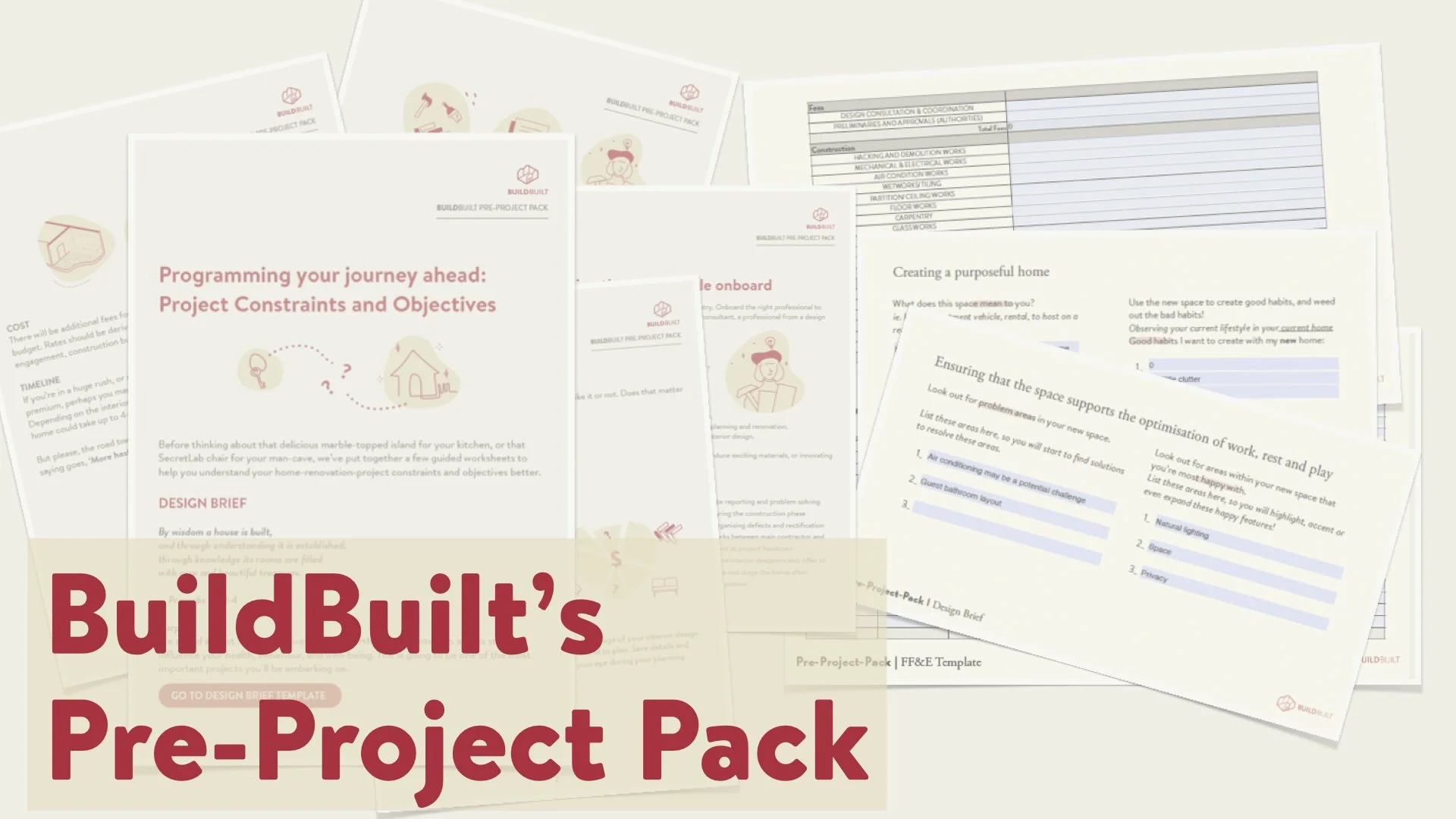4 simple steps to a conflict-free, budget-friendly renovation
4 simple steps to a conflict-free, budget-friendly renovation
A wall-covering test at one of BuildBuilt’s site reminding us of gloomy days ahead.
We have been beset by a dark economy of late. The energy crisis, the continued war in Eastern Europe and the faulty economic machine that is ruining what we’ve worked hard (go away inflation and recession!). The consequences are higher prices in labor, logistics, materials, and utilities within the construction industry.. and the victim? YOU.
To help reduce all that pre-renovation anxiety, we have laid out 4 simple steps for you to have a conflict-free, budget-friendly renovation exercise -
1. Start with a plan
Before you go crazy with plans, believe it or not, there should be another stage before this. Initiate the project by clarifying objectives first.
Get all the stakeholders (inhabitants) in a room: If you aren’t the only person living in or using the space, then it’ll be a good idea to interview everyone. Ask the same question in different ways to get the best out of the interview.
State your purpose and objectives of the project: A clear and simple statement can rule the entire project and save you time at critical decision points. Remember to rank the objectives according to importance and priorities. Try to create adjectives that will give to design decisions down the road.
For example:
‘To design and build a restful home with no more than $70,000 by June 2023, so we can live in peace for a good 10 years before considering our next move! The home must accommodate an incoming baby =) The home must (in order or importance) help us to live healthily, rest peacefully, play together, and create productive work.’
2. Value the process of Designing and Planning
Create a clear visual design brief. Words aren’t enough for a renovation project, so be sure to pull out that power point deck and include as many pictures to direct the professionals to understand your aesthetic and functional needs.
With the help of the objective statement planned earlier, create a list of ‘needs and wants’, and rank them if possible, for each space.
Speak to the pros. Get some advice on technical aspects of your needs. You can also easily do some research with some smart Googling. Figure out the range for costs, timelines, and practical specifications of materials and applications for your future home.
Create a timeline. Building a home, and moving every piece of your life into this new space can be a logistical nightmare. Create a timeline involving all project parties and update this religiously. Understanding critical paths and task dependancies could save you heaps (time, and even money).
*HOT TIP - Fight the need for immediate gratification. Design for negative spaces that can possibly grow with you as you experience different stages of your lives. Planning to travel to Japan for a get-away? Remember that wall by the kitchen that could’ve been a feature wall? After Japan, you could return with a neat art piece to dress that space. Evolve with your home!
3. Options for builders
Trust us. As professionals, our advice is to leave the building and actual renovation to us. Once you’re settled with your brief and guidelines to the project, hand them to several shortlisted designers and/or builders. Have them communicate their value, and ensure that they can stay within your design brief, budget and timelines.
Family first. A good place to start sourcing for contractors would be to ask your friends and families for recommendations. Everyone has different expectations and thresholds for service and quality. To prevent misalignment of expectations, have your friends and families narrate their renovation experiences to you. What might be sufficient for them, might not be for you.
Common Cents. As you are looking to appoint contractors formally, do not merely transact based on faith. Do check that all terms and conditions on contracts make legal sense, and that you minimise all risk exposure on your part. Do your due diligence by looking out for CaseTrust and other authority certificates or endorsements that will help you with a more thorough background check.
4. Control and monitor progress
Keeping tabs. Once the professionals are onboard, do not relinquish complete control! Ensure that your project manager or contractor stays on top of things with weekly site reports, and preemptive measures should there be problems ahead.
A risk assessment should be done internally on the contractors end. If there are risks that have a high probability of happening, and could cause a huge impact on the outcome of the project, these areas of concern should be highlighted. If not, be ready for timeline delays, infringement on budgetary limits, or worse, accidents on site.
When you enquire with us at BuildBuilt, our Pre-Project Pack will help you with all of the above!






